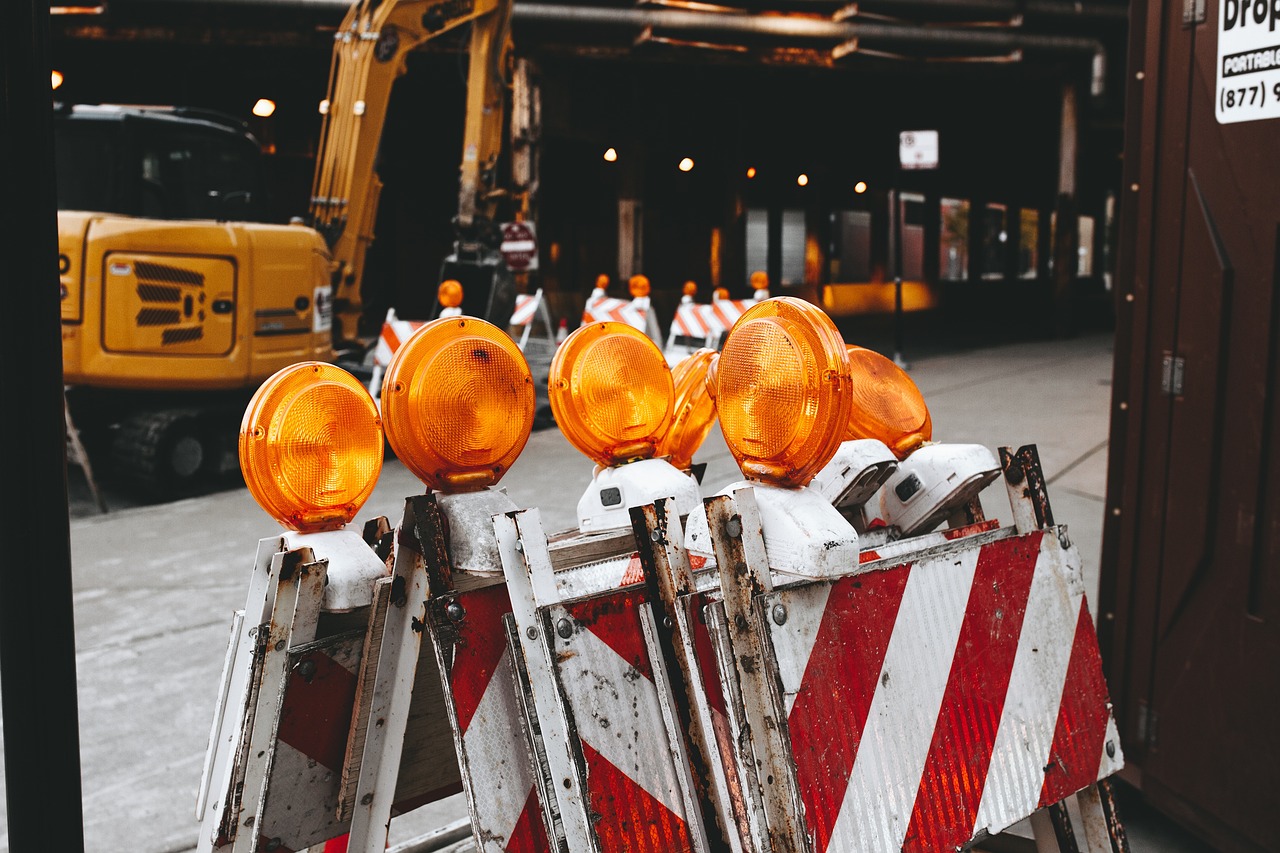Misjudging Safety? The Impact of Human Behavior
In our everyday lives, safety is often taken for granted. We trust that the systems in place will protect us, but what happens when our own behavior undermines those systems? The truth is, human behavior plays a pivotal role in shaping our perceptions and practices regarding safety. Whether we are at work, in public spaces, or even at home, the way we perceive risk can drastically influence our decision-making processes. This article delves into the intricate relationship between human behavior and safety, exploring psychological factors, common misconceptions, and real-world implications.
Imagine you're driving your car, and you see a stop sign. For many, this is a clear signal to halt. However, what if you’re in a rush or feel confident in your driving skills? You might choose to ignore that sign. This scenario perfectly illustrates how our cognitive biases can lead us to misjudge safety. It's not just about the rules; it's about how we interpret them based on our emotions and experiences. Understanding this psychology of risk perception is crucial for improving safety measures across various environments.
Have you ever thought about why some people are more prone to take risks than others? Often, it's because they hold onto certain misconceptions about safety. These misunderstandings can create a false sense of security, leading to dangerous oversights. For instance, many believe that wearing a seatbelt is unnecessary for short trips. This myth can have dire consequences, as statistics show that most accidents happen close to home. By debunking these myths, we can encourage safer behaviors and reinforce the importance of adhering to established safety protocols.
One of the most pervasive misconceptions is the illusion of control. Individuals often think they can manage outcomes in risky situations, which can lead to reckless behavior. This belief can manifest in various ways, such as taking unnecessary risks in the workplace or engaging in unsafe practices at home. The reality is that accidents can happen to anyone, regardless of how much control we think we have. Recognizing this illusion is the first step toward fostering a more cautious and safety-oriented mindset.
Moreover, overconfidence in one’s abilities can contribute significantly to safety failures. For example, a skilled worker may believe they can operate machinery without following safety protocols. This overestimation can lead to accidents that could have been easily avoided. The key takeaway is that humility and a realistic assessment of our skills are essential for maintaining safety in any environment.
Risk-taking behavior is another factor that complicates our understanding of safety. Some individuals thrive on adrenaline and seek out risky situations, often underestimating the potential consequences. This tendency can be particularly dangerous in environments like construction sites or during extreme sports. It's crucial to understand the psychology behind these behaviors to implement effective safety measures that can mitigate risks.
Social influences also play a significant role in shaping our safety behaviors. Peer pressure and groupthink can lead individuals to engage in unsafe practices, often without realizing the potential dangers. For instance, in a workplace setting, if everyone else is skipping safety gear, one might feel compelled to do the same, even if they know better. Addressing these social dynamics is essential for creating a culture of safety where individuals feel empowered to prioritize their well-being.
In conclusion, understanding the impact of human behavior on safety is vital for developing effective strategies to mitigate risks. By addressing misconceptions, recognizing cognitive biases, and fostering a culture of safety, we can create environments that prioritize well-being. The journey toward improved safety is ongoing, and it starts with each of us acknowledging the role our behavior plays in shaping our safety perceptions.
- What is the main factor influencing safety perceptions? Human behavior is the primary factor that shapes how individuals perceive and respond to safety risks.
- How can misconceptions about safety be addressed? By educating individuals on the facts and statistics surrounding safety protocols, we can dispel common myths and encourage safer behaviors.
- Why is training important for safety? Effective training helps individuals understand safety protocols, reducing human error and enhancing overall safety in various environments.
- How do social influences impact safety practices? Peer pressure and groupthink can lead individuals to overlook safety measures, making it essential to foster a culture of safety in any setting.

The Psychology of Risk Perception
Understanding how individuals assess risks is crucial for improving safety measures. Risk perception is not merely a logical evaluation of potential dangers; it is deeply rooted in our psychological makeup. Our brains are wired to respond to threats, but this response is often influenced by a myriad of factors, including cognitive biases and emotional reactions. For instance, have you ever noticed how some people seem to fear flying more than driving, despite statistics showing that flying is far safer? This discrepancy highlights the complex nature of risk perception and how it can be skewed by personal experiences and societal narratives.
One of the key elements in risk perception is cognitive biases. These are systematic patterns of deviation from norm or rationality in judgment. For example, the availability heuristic leads individuals to assess the probability of events based on how easily examples come to mind. If a person frequently hears about plane crashes in the news, they may overestimate the risk of flying, even if the actual data suggests otherwise. This cognitive shortcut can create a false sense of danger, leading to irrational fears and potentially unsafe behaviors.
Emotional responses also play a significant role in how we perceive risk. Fear, anxiety, and even excitement can cloud our judgment. When faced with a risky situation, these emotions can trigger a fight-or-flight response, often resulting in impulsive decisions. For instance, when people feel anxious about a situation, they may overreact and take unnecessary precautions, or conversely, they might dismiss the danger altogether, believing that their emotional state will protect them. This duality is a fascinating aspect of human behavior that can lead to both overprotection and recklessness.
Another critical factor influencing risk perception is social context. People often look to others to gauge how to react in uncertain situations. If a group of friends decides to engage in a risky activity, such as bungee jumping, the collective excitement can diminish individual fears. This phenomenon, known as groupthink, can lead to a dangerous underestimation of risks. It’s essential to recognize how our social circles can shape our understanding and acceptance of risk, often leading us to take actions we might avoid if we were alone.
In summary, the psychology of risk perception is a complex interplay of cognitive biases, emotional responses, and social influences. Understanding these factors is vital for developing effective safety measures. By fostering awareness of how our perceptions can be skewed, we can better prepare ourselves and others to make informed decisions in potentially hazardous situations.
- What is risk perception? Risk perception refers to the subjective judgment that individuals make about the characteristics and severity of a risk.
- How do cognitive biases affect risk perception? Cognitive biases can lead to distorted thinking, causing individuals to misjudge the likelihood or severity of risks based on personal experiences or emotional responses.
- Why is understanding social influences important in risk perception? Social influences can significantly affect individual behavior and decision-making, often leading to riskier choices when in a group setting.

When it comes to safety, our perceptions can often be skewed by myths and misconceptions that we encounter in everyday life. These misunderstandings can lead to dangerous oversights, making it imperative to dissect and debunk them. One prevalent misconception is the idea that safety measures are only necessary in high-risk environments, such as construction sites or laboratories. In reality, safety is a universal concern that extends to our homes, offices, and even public spaces. Ignoring this can result in accidents that could have been easily prevented.
Another common myth is that accidents only happen to others. This belief can create a false sense of security, leading individuals to neglect essential safety precautions. For instance, many people think that because they’ve never had a car accident, they don’t need to wear seatbelts or follow traffic rules diligently. This mindset not only endangers their lives but also poses risks to others on the road. The truth is, safety is not just about personal responsibility; it’s about communal awareness and proactive behaviors.
Moreover, some individuals believe that safety equipment, such as helmets or gloves, is merely a suggestion rather than a requirement. This misconception can be particularly dangerous in environments like construction sites where the use of personal protective equipment (PPE) is crucial. The reality is that these safety measures are designed to protect us from potential hazards, and their absence can significantly increase the risk of injury.
To further illustrate these misconceptions, let’s consider a few examples:
- Myth: “I don’t need to worry about fire safety; I have never experienced a fire.”
- Myth: “If I’m careful, I won’t get hurt.”
- Myth: “Safety training is just a waste of time.”
Each of these beliefs can lead to a dangerous mindset where individuals underestimate the importance of safety protocols. The consequences of such thinking can be dire, not only for the individual but for those around them. In workplaces, for instance, a lack of adherence to safety guidelines can result in accidents that affect entire teams and projects. In public spaces, it can lead to community-wide safety issues, as seen in various incidents where negligence has resulted in injury or worse.
Addressing these misconceptions requires a concerted effort from both individuals and organizations. Education plays a pivotal role in reshaping attitudes toward safety. By fostering an environment where safety is prioritized, we can help dispel these myths and encourage more responsible behaviors. Organizations should implement regular training sessions, workshops, and discussions that focus on the importance of safety in all aspects of life.
In conclusion, understanding and addressing common misconceptions about safety is vital for fostering a culture of awareness and prevention. By challenging these myths, we can create safer environments for everyone. Remember, safety is not just an individual concern; it is a collective responsibility. So, the next time you think about skipping a safety measure, ask yourself: “Is my safety worth the risk?”
Q: Why are safety measures important in everyday life?
A: Safety measures are crucial because they help prevent accidents and injuries, creating a safer environment for everyone. Ignoring safety can lead to severe consequences.
Q: How can I change my perception of safety?
A: Educating yourself about the risks associated with various activities and understanding the importance of safety protocols can help shift your perception towards prioritizing safety.
Q: What should I do if I see someone ignoring safety protocols?
A: It’s important to address the situation calmly and informally. You can remind them about the safety protocols and the potential risks of ignoring them.

The illusion of control is a fascinating psychological phenomenon that leads individuals to believe they have more influence over outcomes than they actually do. Imagine driving a car: you might feel completely in control, steering and accelerating as you wish. However, the reality is that numerous factors—like weather, road conditions, and other drivers—can dramatically affect your safety. This disconnect between perception and reality can often result in risky behaviors that heighten the chances of accidents.
People tend to overestimate their ability to manage risks, believing that their skills or knowledge can shield them from danger. For instance, a seasoned driver might think that their years of experience make them immune to accidents, leading them to engage in reckless behaviors like texting while driving or speeding. This overconfidence can create a false sense of security, which is detrimental not only to the individual but also to others on the road.
Moreover, this illusion isn't limited to driving; it permeates various aspects of life, from workplace safety to recreational activities. In workplaces, employees might feel that their familiarity with machinery or procedures makes them less susceptible to accidents. This belief can result in shortcuts being taken, safety protocols ignored, or a general complacency towards potential hazards. In fact, a study showed that workers who felt overly confident about their safety skills were more likely to engage in unsafe practices. The table below illustrates some common scenarios where the illusion of control can manifest:
| Context | Illusion of Control Example | Potential Consequences |
|---|---|---|
| Driving | Texting while driving | Increased risk of accidents |
| Workplace | Ignoring safety protocols | Higher likelihood of injury |
| Sports | Underestimating risks in extreme sports | Serious injuries or fatalities |
Another aspect to consider is how this illusion can lead to a cycle of risk-taking. When individuals feel in control, they may take more risks, which can lead to negative outcomes. If they escape without incident, it reinforces their belief in their control, prompting them to take even greater risks next time. This cycle can be particularly dangerous, as it creates a false narrative that they are invulnerable.
In conclusion, the illusion of control is a double-edged sword. While it can provide a sense of confidence and empowerment, it often blinds individuals to real dangers and leads them to make poor decisions. Recognizing this psychological trap is crucial for improving safety practices. By acknowledging that not all factors are within our control, we can adopt a more cautious approach to risk management, ultimately promoting safer environments for ourselves and those around us.
- What is the illusion of control? It is a psychological phenomenon where individuals believe they have more control over outcomes than they actually do.
- How can the illusion of control affect safety? It can lead to overconfidence and risky behaviors, increasing the likelihood of accidents.
- What are some examples of the illusion of control in everyday life? Examples include texting while driving, ignoring safety protocols at work, and underestimating risks in sports.

Overconfidence in one’s own abilities is a phenomenon that can have serious implications for safety across various environments. It’s that nagging feeling that, “I’ve got this,” even when the situation may be perilous. This mindset often leads individuals to underestimate risks and overestimate their own capabilities, which can result in dangerous decisions. For instance, consider a seasoned driver who believes they can text while driving because they’ve been behind the wheel for years. While their experience might suggest they can handle distractions, the reality is that even the most skilled drivers are susceptible to accidents when they divert their attention from the road.
This overconfidence can manifest in numerous ways, such as:
- Ignoring Safety Protocols: Individuals might skip essential safety measures, convinced that they won’t encounter any issues.
- Taking Unnecessary Risks: A person may decide to engage in risky behaviors, like climbing a high structure without proper safety gear, believing they can manage the situation.
- Neglecting Training: Overconfident individuals may feel that additional training is unnecessary, thinking they already know everything they need to know.
The implications of this overconfidence can be profound. In workplaces, for example, employees may overlook critical safety procedures, leading to accidents that could have been easily prevented. A study conducted by the National Institute for Occupational Safety and Health (NIOSH) found that a significant percentage of workplace injuries were attributed to employees who felt overly confident in their skills. This highlights the need for a cultural shift where humility and recognition of one’s limitations are encouraged.
Moreover, overconfidence is not just limited to physical skills; it can also extend to decision-making processes. When individuals believe they possess superior judgment, they may disregard input from others, leading to groupthink. This can create a dangerous environment where critical safety concerns are overlooked, ultimately resulting in catastrophic outcomes. It’s essential to foster an environment where questioning and constructive criticism are welcomed, as this can mitigate the risks associated with overconfidence.
In conclusion, while confidence can be a valuable trait, it’s crucial to recognize the thin line between confidence and overconfidence. Acknowledging our limitations and remaining open to learning can significantly enhance safety practices. By promoting a culture of continuous improvement and vigilance, we can reduce the risks associated with overconfidence and create safer environments for everyone.
- What is overconfidence in skills? Overconfidence in skills refers to an individual's inflated belief in their abilities, often leading to risky behaviors and neglect of safety protocols.
- How can overconfidence affect safety? Overconfidence can lead individuals to underestimate risks, ignore safety measures, and make poor decisions that may result in accidents or injuries.
- What can be done to mitigate overconfidence? Encouraging continuous learning, promoting humility, and fostering an environment where questioning is welcomed can help mitigate the effects of overconfidence.

Risk-taking behavior is a fascinating yet complex aspect of human psychology. It’s that thrilling rush we get when we decide to take a leap of faith, whether it’s jumping off a cliff into the ocean or deciding to drive a little faster than the speed limit. But why do we engage in such behaviors, often ignoring the potential consequences? Understanding the psychology behind risk-taking can shed light on why we sometimes act against our better judgment.
One primary factor influencing risk-taking is the desire for excitement. Many individuals are hardwired to seek out new experiences, which can lead to a heightened sense of adventure. This craving for thrill can sometimes cloud our judgment, causing us to underestimate risks. For instance, consider extreme sports enthusiasts. They willingly engage in activities that most would deem perilous, driven by the adrenaline rush and the sense of accomplishment. However, this behavior can lead to serious injuries or even fatalities if safety measures are disregarded.
Another interesting angle is the social context in which risk-taking occurs. Often, individuals are influenced by their peers. When surrounded by friends who are also engaging in risky behaviors, it can create a sense of camaraderie that encourages further risk-taking. This phenomenon is often referred to as groupthink, where the desire for harmony in a group leads to poor decision-making. People may disregard their own safety concerns simply to fit in or gain approval from others. For example, a teenager might feel pressured to try drugs at a party because everyone else is doing it, despite knowing the potential dangers.
Additionally, the illusion of invulnerability plays a significant role in risk-taking behavior. Many individuals, especially younger ones, believe that bad things happen to others, not to them. This cognitive bias can lead to reckless decisions, such as texting while driving or ignoring safety gear during sports. The belief that “it won’t happen to me” can be a dangerous mindset, often resulting in severe consequences.
Interestingly, the context of the situation can also dictate the level of risk individuals are willing to take. For instance, in high-pressure environments, such as during emergencies or in competitive sports, people might engage in riskier behaviors than they would in their everyday lives. Here, the stakes feel higher, and the immediate rewards can overshadow potential dangers. This leads to a paradox where individuals may become more reckless when they perceive a heightened sense of urgency.
In summary, risk-taking behavior is influenced by a myriad of factors, including the desire for excitement, social dynamics, the illusion of invulnerability, and situational contexts. Understanding these elements can help us develop better strategies for promoting safety and reducing the likelihood of harmful decisions. By recognizing the psychological triggers behind our actions, we can create environments that encourage safer behaviors and mitigate the risks associated with recklessness.
- What are the main reasons people engage in risk-taking behavior?
People often take risks due to a desire for excitement, social influences, and cognitive biases that make them feel invulnerable. - How can understanding risk-taking behavior improve safety protocols?
By identifying the psychological factors that lead to risk-taking, organizations can tailor safety training and interventions to address these issues. - Are there specific demographics more prone to risk-taking?
Generally, younger individuals tend to engage in more risk-taking behaviors due to factors like the illusion of invulnerability and peer pressure.

Social influences play a critical role in shaping our behaviors, especially when it comes to safety. Have you ever noticed how you might behave differently in a group compared to when you're alone? This phenomenon, known as groupthink, often leads individuals to prioritize conformity over personal judgment, which can significantly impact safety practices. When people feel the pressure to align with the group's actions, they may overlook safety protocols that they would typically follow if they were alone.
Consider this: when you’re at a party and everyone is dancing on a table, the urge to join in can overshadow the potential risks involved. This is a classic example of how social dynamics can lead to risky behavior. In environments where safety is paramount, such as construction sites or laboratories, the consequences of groupthink can be even more severe. If one person decides to skip wearing protective gear and others follow suit, the entire group becomes vulnerable to accidents.
Moreover, the influence of social media cannot be underestimated. In today's digital age, behaviors and attitudes towards safety can be amplified through online platforms. For instance, if a popular influencer shares a video showcasing a dangerous stunt without proper safety measures, their followers might feel encouraged to replicate that behavior, often without considering the risks involved. This ripple effect can create a culture where unsafe practices are normalized, leading to a significant increase in accidents and injuries.
To illustrate the impact of social influences on safety, let's look at a few key factors:
- Peer Pressure: The desire to fit in can lead individuals to engage in unsafe behaviors, especially among younger populations.
- Social Norms: If a community accepts certain risky behaviors as normal, individuals are less likely to question those practices.
- Leadership Influence: In workplaces, the attitudes and behaviors of leaders can set the tone for safety culture. A leader who prioritizes safety can encourage a similar mindset among employees.
It's crucial to recognize these influences and actively work to counteract them. Creating an environment that encourages open discussions about safety, where individuals feel empowered to voice concerns without fear of judgment, can mitigate the negative effects of social influences. Training programs that emphasize the importance of personal responsibility and critical thinking can also help individuals make safer choices, even in group settings.
In summary, while social influences can lead to unsafe behaviors, awareness and proactive measures can help foster a culture of safety. By understanding the dynamics at play, we can better navigate the challenges that arise from group behavior and ultimately enhance safety practices in various environments.
Q: How can I resist peer pressure when it comes to safety?
A: It's important to cultivate self-confidence and assertiveness. Practice saying "no" to unsafe behaviors and surround yourself with individuals who value safety.
Q: What role does leadership play in safety culture?
A: Leaders set the tone for safety practices. When leaders prioritize safety and model safe behavior, it encourages employees to do the same.
Q: How can social media impact safety behaviors?
A: Social media can spread both positive and negative safety messages. It's essential to promote safe practices online and critically evaluate the content we consume.

When it comes to ensuring safety in any environment, whether it be a bustling workplace or a serene public space, the role of training and education cannot be overstated. Think about it: how often do we hear about accidents that could have been prevented with the right training? It's like trying to navigate a maze blindfolded; without the right guidance, you're bound to bump into walls. In this section, we'll explore how effective training programs and continuous education can significantly mitigate human error and create a culture of safety.
First and foremost, let’s consider the essence of effective training. It's not just about ticking boxes; it's about empowering individuals with the knowledge and skills they need to recognize hazards and respond appropriately. For example, in a workplace setting, employees who undergo regular safety training are more likely to identify potential risks before they escalate into serious incidents. This proactive approach can save lives and prevent costly damages. According to a study, organizations that invest in comprehensive safety training programs see a 30% reduction in workplace accidents. Isn't that a compelling reason to prioritize training?
Moreover, safety drills play a crucial role in this educational landscape. Imagine being in an emergency situation without having practiced how to respond. It’s akin to being thrown into the deep end of a pool without knowing how to swim. Regular safety drills not only familiarize individuals with emergency procedures but also instill a sense of confidence and readiness. Research shows that participants in frequent drills are 50% more likely to react swiftly and correctly during actual emergencies. This is because repetition builds muscle memory, making the response almost instinctual.
Let's not forget the importance of continuous learning. In a world that is constantly evolving, sticking to outdated safety protocols is like using a flip phone in the age of smartphones. New technologies, materials, and methods emerge all the time, and safety practices must adapt accordingly. Organizations should foster an environment where ongoing education is encouraged, ensuring that employees stay updated on best practices and emerging risks. This could include workshops, online courses, or even informal lunch-and-learns. The more informed the workforce, the safer the environment.
To summarize the impact of training and education on safety, consider the following table that illustrates the benefits:
| Benefit | Description |
|---|---|
| Enhanced Awareness | Employees become more attuned to potential hazards, reducing the likelihood of accidents. |
| Improved Response | Regular drills and training ensure quick and effective responses in emergencies. |
| Adaptability | Continuous learning allows for the adaptation of safety protocols to new challenges. |
| Culture of Safety | Training fosters a shared commitment to safety among all employees. |
In conclusion, investing in training and education is not merely a compliance requirement; it is a vital strategy for enhancing safety and preventing accidents. By equipping individuals with the necessary skills and knowledge, organizations can create a safer environment that benefits everyone involved.
- Why is training important for safety? Training equips individuals with the knowledge and skills needed to recognize and respond to hazards effectively.
- How often should safety drills be conducted? Regular drills should be conducted at least quarterly to ensure preparedness and reinforce safety protocols.
- What role does continuous learning play in safety? Continuous learning helps employees stay updated on new risks and best practices, ensuring a proactive approach to safety.

When it comes to safety, the old saying "practice makes perfect" rings particularly true. Safety drills are not just a checkbox on a corporate agenda; they are a vital component in preparing individuals and organizations for emergencies. Imagine being in a high-pressure situation where every second counts. Wouldn't you want to know exactly what to do? This is where safety drills come into play, transforming theoretical knowledge into practical skills that can save lives.
Research consistently shows that regular safety drills significantly improve preparedness. For instance, a study conducted by the National Safety Council revealed that organizations that practiced emergency drills at least quarterly had a 40% lower incident rate compared to those that did not. This stark difference highlights how familiarity with emergency procedures can lead to quicker, more effective responses during actual crises.
Moreover, safety drills help to instill a sense of confidence and calm among participants. When individuals know what to expect, their anxiety levels decrease, enabling them to act decisively rather than panic. This psychological readiness is crucial, especially in environments where every moment counts, such as in schools, hospitals, and workplaces. The more a person practices, the more they internalize the necessary actions, leading to a smoother execution during real emergencies.
Another critical aspect of safety drills is the opportunity for feedback and improvement. After a drill, participants can discuss what went well and what could be improved. This debriefing process is essential for refining procedures and ensuring that everyone is on the same page. Effective communication during these sessions can also foster a culture of safety, where individuals feel empowered to voice concerns and suggest enhancements.
To illustrate the effectiveness of safety drills, consider the following table that summarizes key benefits:
| Benefit | Description |
|---|---|
| Improved Response Time | Participants are more likely to react swiftly and correctly in emergencies. |
| Increased Confidence | Regular practice reduces anxiety and fosters a sense of preparedness. |
| Opportunity for Feedback | Drills provide a platform for discussing improvements and refining procedures. |
| Enhanced Teamwork | Drills promote communication and collaboration among team members. |
In summary, safety drills are a critical investment in any organization’s safety strategy. They not only prepare individuals for the unexpected but also cultivate a culture of safety that can permeate every aspect of operations. So, the next time you hear about a scheduled safety drill, remember that it’s not just an inconvenience; it's a proactive step toward ensuring everyone’s well-being.
- How often should safety drills be conducted? Regular safety drills should be conducted at least quarterly, but the frequency may vary based on the organization's needs and the type of risks involved.
- What should be included in a safety drill? A safety drill should include clear objectives, designated roles, and a debriefing session to discuss outcomes and areas for improvement.
- Are safety drills required by law? In many industries, safety drills are mandated by regulatory bodies to ensure compliance and protect employees.
- How can we make safety drills more engaging? Incorporating realistic scenarios, using technology, and encouraging participant feedback can make drills more engaging and effective.

In today's fast-paced world, the significance of continuous learning cannot be overstated, especially when it comes to safety. As environments evolve and new technologies emerge, staying informed is crucial for adapting safety protocols effectively. Imagine a ship navigating through uncharted waters; without a keen understanding of the changing tides and weather patterns, it risks capsizing. Similarly, organizations and individuals must remain vigilant and proactive in their safety education to avoid potential hazards.
Continuous learning ensures that safety measures are not just a one-time training session but a dynamic process that evolves with time. Regular updates on safety protocols can help individuals recognize new risks and understand how to mitigate them. For instance, consider the rapid advancements in technology that have introduced new machinery in workplaces. Without ongoing training, employees may not be fully aware of the safety features or potential dangers associated with these new tools, leading to an increased risk of accidents.
Furthermore, fostering a culture of continuous learning promotes an environment where safety is prioritized. When organizations encourage employees to engage in ongoing education, it creates a sense of responsibility and ownership over safety practices. This culture can be reinforced through various means, such as:
- Regular workshops and training sessions
- Access to online courses and resources
- Encouragement of knowledge sharing among employees
Investing in continuous learning not only enhances individual skills but also contributes to the overall safety of the organization. For example, a study conducted on workplace safety found that companies with ongoing training programs experienced a 30% reduction in accidents compared to those that only provided initial training. This statistic underscores the importance of making learning a continuous endeavor rather than a one-off event.
Moreover, as we face new challenges—be it in the form of emerging health crises, technological advancements, or environmental changes—staying updated on safety protocols can be the difference between a safe environment and a catastrophic incident. Consider the COVID-19 pandemic: organizations that swiftly adapted their safety protocols through continuous learning were better equipped to protect their employees and customers, showcasing the vital role of education in crisis management.
In summary, the importance of continuous learning in safety cannot be overlooked. It is an essential component that not only prepares individuals for immediate risks but also equips them with the knowledge to anticipate future challenges. By fostering a culture of learning, organizations can significantly enhance their safety practices, reduce human error, and ultimately create a safer environment for everyone.
- Why is continuous learning important for safety?
Continuous learning helps individuals stay updated on new risks and safety protocols, minimizing the chance of accidents. - How can organizations promote continuous learning?
Organizations can promote continuous learning by providing regular training sessions, access to resources, and encouraging knowledge sharing. - What are the benefits of ongoing safety training?
Ongoing safety training leads to a reduction in accidents, enhances employee confidence, and fosters a culture of safety within the organization.

Examining real-life incidents of human error provides invaluable insights into how misjudging safety can lead to catastrophic consequences. These case studies serve as a reminder that human behavior plays a significant role in safety practices across various environments. By analyzing notable incidents, we can uncover patterns of behavior that may have contributed to the failures, allowing us to develop better safety protocols and training programs.
One of the most illustrative examples of human error can be found in the aviation industry. The infamous 1982 Air Canada Flight 143, also known as the "Gimli Glider" incident, highlights how a simple misjudgment can escalate into a life-threatening situation. The flight crew miscalculated the amount of fuel needed for the journey due to a conversion error between metric and imperial units. This led to the aircraft running out of fuel mid-flight. Fortunately, the pilots managed to land the plane safely on a former military airstrip, but the incident serves as a crucial lesson in the importance of accurate calculations and effective communication in high-stakes environments.
Similarly, the Challenger Space Shuttle disaster in 1986 is another poignant example of how human behavior can lead to tragic outcomes. Engineers were aware of potential issues with the O-rings in cold temperatures but chose to proceed with the launch due to external pressures and overconfidence in the shuttle's design. This decision ultimately led to the loss of seven astronauts. The incident underscored the need for a culture that encourages reporting concerns and prioritizes safety over schedules and budgets.
In the workplace, human error can also have dire consequences. For instance, the Bhopal gas tragedy in 1984, one of the world's worst industrial disasters, was precipitated by a series of human errors and safety protocol violations. An accidental release of methyl isocyanate gas resulted in thousands of deaths and long-term health issues for the local population. Investigations revealed that inadequate training, poor maintenance of safety equipment, and a lack of proper emergency response plans were significant contributors to the disaster.
To further illustrate the impact of human error, let’s take a look at a table summarizing some key case studies:
| Incident | Date | Key Factors | Lessons Learned |
|---|---|---|---|
| Air Canada Flight 143 | 1982 | Fuel miscalculation, conversion error | Importance of accurate calculations and communication |
| Challenger Disaster | 1986 | O-ring concerns, external pressure | Need for a safety-first culture |
| Bhopal Gas Tragedy | 1984 | Inadequate training, poor maintenance | Critical need for emergency response plans |
These case studies not only highlight the consequences of human error but also emphasize the need for continuous learning and improvement in safety practices. By understanding the psychological factors that lead to these errors, we can develop more effective training programs that address these issues head-on. It’s essential to foster an environment where safety is prioritized, and employees feel empowered to voice concerns without fear of retribution.
In conclusion, the examination of human error in safety contexts reveals a wealth of knowledge that can be harnessed to prevent future incidents. By learning from past mistakes, we can create safer environments for everyone, whether in the workplace, on the road, or in public spaces. The journey towards improved safety is ongoing, and it requires a collective effort rooted in understanding human behavior and its impact on safety practices.
- What is human error in safety contexts? Human error refers to mistakes made by individuals that can lead to accidents or unsafe situations, often due to misjudgment, lack of training, or cognitive biases.
- How can we mitigate human error? Mitigating human error involves improving training, fostering a safety-first culture, and encouraging open communication about safety concerns.
- Why are case studies important? Case studies provide real-world examples that highlight the consequences of human error and offer lessons that can be applied to improve safety practices.

Workplace accidents serve as stark reminders of the importance of safety protocols and the need for constant vigilance in our professional environments. These incidents often arise from a combination of human error, inadequate training, and a lack of proper safety measures. When we analyze these accidents, we uncover critical lessons that can help prevent future occurrences, ultimately fostering a safer workplace for everyone.
One major takeaway from studying workplace accidents is the significance of clear communication. Misunderstandings or a lack of information can lead to catastrophic outcomes. For instance, in construction sites, workers must be fully aware of their roles and the hazards they may face. An incident can occur if a safety protocol isn’t communicated effectively. Therefore, establishing a culture of open dialogue where employees feel comfortable voicing concerns can significantly reduce risks.
Another lesson is the necessity for comprehensive training programs. Many accidents could have been avoided with proper instruction and ongoing education. For example, a manufacturing plant that implemented regular safety training sessions saw a dramatic decrease in accidents. By equipping employees with the knowledge and skills they need, they become more adept at identifying potential hazards and responding appropriately. Regular refreshers ensure that safety practices remain top of mind.
Moreover, it’s crucial to recognize the role of accountability in preventing workplace accidents. When employees understand that they are responsible for their actions and the safety of their coworkers, they are more likely to adhere to safety protocols. This can be reinforced through performance evaluations that include safety compliance as a criterion. In a study conducted across various industries, companies that fostered a culture of accountability experienced fewer incidents compared to those that did not.
To illustrate these points, let’s look at a few notable case studies:
| Incident | Key Lesson | Outcome |
|---|---|---|
| Construction site collapse | Importance of clear communication | Increased safety meetings and protocol updates |
| Factory machinery accident | Need for comprehensive training | Implementation of ongoing training programs |
| Warehouse injury | Role of accountability | Introduction of safety compliance evaluations |
These examples highlight how learning from past mistakes can lead to significant improvements in workplace safety. By fostering an environment where safety is prioritized, companies not only protect their employees but also enhance productivity and morale. After all, a safe workplace is a productive workplace!
- What are the most common causes of workplace accidents?
Common causes include lack of training, poor communication, equipment failure, and unsafe working conditions.
- How can employers improve workplace safety?
Employers can improve safety by implementing comprehensive training programs, fostering open communication, and promoting a culture of accountability.
- What role do employees play in workplace safety?
Employees play a crucial role by adhering to safety protocols, reporting hazards, and participating in training sessions.

When we think about public safety incidents, our minds often drift to dramatic events that make headlines. However, these incidents are more than just news stories; they serve as critical lessons that can shape our understanding of safety in community settings. Public safety incidents highlight how collective behavior, often influenced by social dynamics, can dramatically impact the safety of individuals and communities alike. For instance, consider how a crowd reacts during an emergency. Panic can spread like wildfire, leading to chaos and potentially dangerous situations. This reaction is a testament to the powerful psychological effects of group behavior.
One notable example is the infamous 2017 Manchester Arena bombing, where a terrorist attack during a concert resulted in numerous casualties. This tragic event not only showcased the immediate dangers posed by such acts but also revealed how the crowd's response impacted the overall safety of the situation. In the aftermath, it became evident that many individuals were unsure of how to react, often following the crowd instead of making informed decisions. This incident underscores the importance of understanding human behavior in public safety contexts.
Moreover, public safety incidents can also arise from seemingly mundane situations. Take, for example, the annual New Year’s Eve celebrations in major cities. While these gatherings are often festive, they can also lead to significant safety concerns, such as overcrowding, alcohol consumption, and potential violence. In 2016, a mass shooting during a New Year’s Eve celebration in Istanbul left many injured and raised alarms about security measures in public spaces. These events reveal how safety protocols must adapt to the behavior of large groups, ensuring that precautions are in place to mitigate risks.
To further illustrate the impact of human behavior on public safety, let’s look at a few key factors that contribute to these incidents:
- Social Dynamics: Peer pressure can lead individuals to engage in risky behaviors that compromise safety, such as excessive drinking or ignoring safety protocols in crowded environments.
- Communication Breakdowns: In high-stress situations, clear communication is vital. Misunderstandings can lead to panic and exacerbate dangerous conditions.
- Preparedness: Communities that invest in safety education and emergency preparedness tend to fare better during public safety incidents, as individuals are more likely to know how to respond appropriately.
In conclusion, public safety incidents are not just isolated occurrences; they are reflections of human behavior and societal norms. By analyzing these incidents, we can glean valuable insights into how to improve safety measures and enhance community resilience. Understanding the psychology behind crowd behavior, enhancing communication strategies, and fostering a culture of preparedness are essential steps in minimizing the risks associated with public gatherings. As we continue to learn from past incidents, we can work towards creating safer environments for everyone.
- What are some common causes of public safety incidents? Public safety incidents can arise from various factors, including poor crowd management, lack of preparedness, and social dynamics that encourage risky behaviors.
- How can communities improve their response to public safety incidents? Communities can enhance their response by investing in safety education, conducting regular drills, and fostering clear communication among emergency responders and the public.
- What role does social behavior play in public safety? Social behavior significantly influences how individuals react in emergencies. Understanding these dynamics can help in developing effective safety protocols.
Frequently Asked Questions
- What factors influence our perception of safety?
Our perception of safety is heavily influenced by psychological factors such as cognitive biases and emotional responses. For instance, how we assess risks can be skewed by our past experiences or the information we have at hand. Understanding these factors is crucial for improving safety measures in any environment.
- Are there common misconceptions about safety protocols?
Absolutely! Many people hold misconceptions that can lead to dangerous oversights. For example, some believe that safety measures are only necessary in high-risk environments, while in reality, everyday situations can also be perilous. Recognizing these myths is essential for fostering a culture of safety.
- How does overconfidence affect safety behavior?
Overconfidence can lead individuals to underestimate risks and overestimate their abilities. This illusion of control often results in reckless behavior, making individuals more vulnerable to accidents. It’s crucial to remain aware of one’s limits to enhance safety.
- What role does social influence play in safety practices?
Social dynamics, such as peer pressure and groupthink, can significantly impact safety behaviors. When individuals prioritize group acceptance over personal safety, it can lead to unsafe practices. Being aware of these social influences can help individuals make better safety choices.
- Why are training and education important for safety?
Effective training and education are vital for promoting safety awareness. They help individuals understand safety protocols and prepare for emergencies. Regular training can mitigate human error and enhance overall safety in various environments.
- How effective are safety drills?
Safety drills are highly effective in improving preparedness. Regular practice helps change behaviors and attitudes toward safety, making individuals more confident and capable during emergencies. It’s like practicing for a big game; the more you prepare, the better you perform!
- What can be learned from case studies of human error?
Case studies of human error provide valuable insights into the consequences of misjudging safety. By analyzing notable incidents, we can learn key lessons that help improve safety practices in both workplaces and public spaces. These lessons are essential for preventing future accidents.
- How can continuous learning improve safety protocols?
Continuous learning is crucial as safety protocols need to evolve with new information and technologies. Ongoing education ensures that individuals stay updated on the latest safety practices, helping them adapt to changing environments effectively.



















